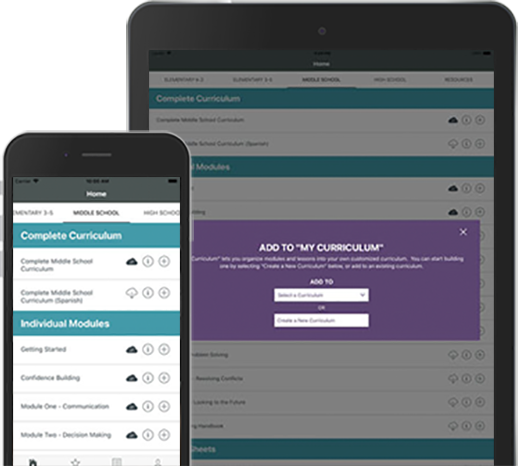Being True To Yourself
Posted: September 18, 2019By Rossana Villaflor, Teacher

Once they enter middle school, students begin facing increasingly difficult decisions in both their academic and personal lives. In sixth grade, they begin to build a track record of their grades and accomplishments that will help them get accepted to their chosen high school or gain more options for quality secondary schools. As pre-adolescents, students begin to develop deeper feelings of attachment to friends and feel a stronger need to be part of a group and be accepted. If students don’t get a good grasp of what they value in their lives, they could easily make poor decisions that they will regret later on.
Helping students identify what is important to them will help them better understand which choices will be detrimental to what they value for themselves and their future. Having meaningful discussions and engaging in life skills activities can help students become proactive with different scenarios they could face. The 10-minute activity “Being True to Yourself,” (found in Lesson 4 “Clarifying Values” of the Middle School Curriculum Confidence Building module), is a great opportunity for students to demonstrate how their values play a major role in the decisions they make. For instance, a student who loves playing basketball and values being part of the team should know that the decision to skip practice will jeopardize his/her progress and hinder the team’s advancement. If time permits, students can share or reflect on a real-life scenario they have faced and learned from that.
Leading up to the third marking period last year, my eighth graders needed to make a list of their values as part of their decision making process in selecting which high school programs they wanted to apply for and attend the next year. Some of my gifted and talented art students decided they wanted to apply for the city’s art-focused high school and work toward earning artistic scholarships and awards for college. My other students, however, decided that they felt more strongly about acting or applying for the athletic programs in high school and declined to apply to the art program. I used this as an opportunity to discuss being respectful of what others value while still being true to their own values.
With two of my eighth-grade students, I needed to ask whether the decisions they were making were benefiting what they wanted to achieve for themselves. We had a talk about realistic expectations and reviewed the criteria required of the school that they wanted to apply for and whether they were fulfilling that criteria. Another one of my students made the tough decision of not participating in more than one extracurricular after-school activity because he felt it was more important for him to focus on his studies and earn straight A’s. His goal is to graduate as the valedictorian of his class.
Another one of my students came to class in tears one afternoon. When I asked her what happened, she reluctantly confided that the boy she liked asked her out, but she also found out that she was his “second choice.” Naturally, her feelings were hurt, and she didn’t know whether or not she should talk to him about it or leave it alone. One of the key points I kept in mind within this conversation and that I shared with my student is: “Your decisions may be tough, but if you stay true to yourself and what you value, you’ll feel good about whatever you decide.” I also asked her to write about her feelings in her journal and reflect on them while reminding her that she is a unique and outstanding person who need not allow others to compare her to anyone else.
I believe that teaching my students life skills is one of the most important things I can do for them. Helping them understand how their values influence everything they do and that they should make decisions based on those values is an essential skill to have. Sometimes, the decisions they have to make may be difficult, but by staying true to themselves they will feel good about those decisions in the years to come.
You can download the entire Overcoming Obstacles K-12 curriculum—including hundreds of lessons and activities—by logging in to your account. If you don’t yet have one, registering is fast, easy, and free—now and forever! Click here to get started. And if you think other educators would find Overcoming Obstacles’ lessons beneficial for their students, please share this blog with them.




